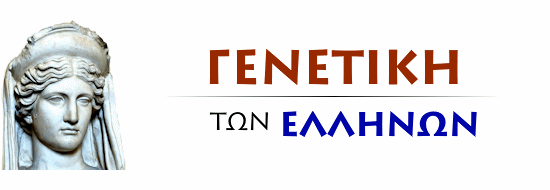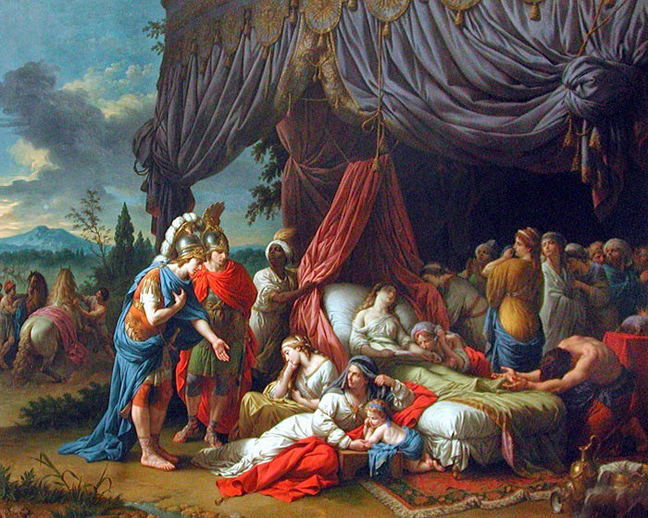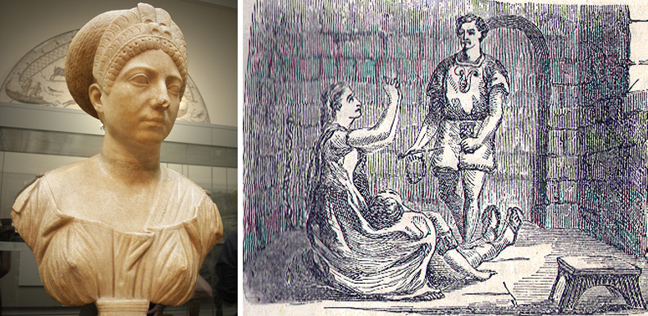Th γάρ what good space oyd’ efimeros
oyd’ eratos, oios Amphi Sirios roas.
Archilochos.
Although Archilochus, style question, my guide is like writing, though the excerpt that had escaped my attention, until the project and my friend Christos Polatidis had once indicated. It looks like the earliest written testimony of our country, from man who saw him up close. Indeed it is very buttery reason, a and exits the poisonous pen of Archilochos, which unlike that of Homer, had great sparingly on flattery, While rattled the spikes for everything bad. Thassos shows like donkey back to the same poem.
And indeed Archilochus should arrived in our parts. In the battles of Phrygian Pariwn with genders, on the coast opposite the island of Thassos, the last colony of Pariwn was Galipsos, very close to Iiona which was the port of Amphipolis. So in some of the battles with neighbors, claiming living space found in the Valley of Struma. We know that the Parioi arrived in Bisaltia where according to Callimachus, Bisalti Osydri killed, but also in the archaeological excavations of Amphipolis statue on horseback from pedestal was found which has the inscription: Commissioned the Parioi monument in Ember Toki, Why died in his teens, battling for the erati Iiona.
This great little intro and verse of Archilochos, is to understand as much as possible, the complex, When talking about ancient tribes. Seeing as there are no clear dividing lines. When they battle like enemies, when defending along the Iiona. The Athenians would have like heroic cult in Amphipolis the Ember King Riso. Which mythical Rhesus of the Iliad, It was typically Thracian and… “Serraios”.
“Re’ the winds dernomenos
the pageroys of Thrace, Paionia and”
“Around the Pangeo
and the Paionioys Plains”
Euripides Rhesus
As we have seen, writing for the prehistoric area of leaves, the area was inhabited by Thracians, Paeonian and Pelasgians. From these sheets impurities, and other neighbouring (Macedonians etc), or settlers (Parioi, Athenians etc) created many races around the Strymon and the slopes of the mountains that surround the basin, What we call today the Prefecture of Serres. With influences from the tribes who were isolated or prosmichthikan, they created their own culture and dialect, which characterised. Based on these well, separate these phyla into two categories. In Phrygian and Paionika, from the main effect mainly linguistic dialect which used. The areas of the County, as will the quote, does not have an absolute nature as to their geographical identification, a and the sexes were not borders and identify Paioniko or Thracian sex, It is like we are delivered from the ancient.
Paionika genders:
Agrianes
“…and anisti and Agrianas and Laiaioys and others as Nations Paionika…”
Thucydides
The Agrianes as their hands in Thucydides is sex Paioniko residing in the NORTHEAST area of Strymon Uptown, as written by Strabo. C. Kaftantzis in our history of Serres writes that should be lived in an important part of ancient orbiloy, from the area of Melenikou (South Bulgaria), until the SOUTHWEST foot of Menoikioy.
Arrian to Alexander ascent, the singles of the Paeonian, so I have to assume that during the period of classical times, There was some cultural change to the Agrianes. The Agrianes was one of the most robust, Hardy and polemikoteroys peoples of the then known world, as informs us again Arrian. Were friends and allies of the Macedonians and the King Laggaros had very friendly ties, both Philip II’ and m. Alexander.
Latest reports about sex that we have at the time of Perseus. Apparently then assimilated culturally into another sex. However when we say “assimilated” ή “disappeared”, I need to know how the characteristics of each people and the cultural, religious (We'll talk about this in more detail) heritage the digests within a new impurity. Nothing is lost and everything is tradition. Them to not repeating you should bear in mind and in subsequent races that we will mention.
Laiaioi
“Laiaioi nation Paionikon” us writes Stephen of Byzantium. Are the neighbors of Agriani, As Thucydides informs us: “and the Strymonos River, the Skombroy and conditions, di Laiaiwn and flows of Agriani”. There aren't many references for the Laiaioys. Probably lived in the shadow of the more powerful and their gay of Agriani.
Siriopaiones
The Siriopaiones with its capital the Siri, According to Herodotus lived in the downtown area which was later named Odomantiki. The first historical reference to this people in 513p. During his campaign against the Persian General Megabazoy Paiones.
Paioples
The people he seems to lived in the mountainous outskirts of Menikio, compared with lowland Siropaionwn. Specifically in the area of current darnakochwriwn, as and further East in the foothills and slopes of Menikio, to the n. Zichni. We report from Herodotus to be from Megabazo in Persia and the adventurous return. Later we read again about them during the campaign of Xerxes at 480p. They have found small coins with depiction of wild ducks and lizard which according to Svoronos as assigned to Paioples. In fact the Paioples considers Svoronos as immigrants persecuted by the Macedonians, coming from the area of Prespa.
Doberes
People who according to Herodotus lived to the Paioplwn, likely in the region n. Zichni up Alistrati and probably is part of a Paionikoy sex which was cut off from the area of Dojran and settled in the area after the Trojan, the era of colonization Paionikis to the East and South.
Derrones – Zaieleoi – Orreskioi
Three folks who are unknown to us their geographical location, but we are known from their coins. On the basis of their currencies, confirming the existence of these peoples in the area around Strymon at the 500p. about. Of the performances and the currency symbols, conjectured that it is peoples Paionikoys. The most interesting are the Derrones, who like delivers the Hesychius took their name from the one deity Darwn, which was the goddess of health. It should be noted that the Greeks used to call all healers gods, as Paeonian or Paiionas. Here you have to stand out in a currency Pelasgic – Paioniko that one side has the name Lykeios and other Apollo with the inscription Derrwnaios. The therapist God Apollo.
Phrygian language genders:
Maedi
“Maedi, nation of Thrace, near Macedonia…” us written by F. Of Byzantium. The Maedi shared with Laiaioys and Paeonian Agrianes and the Thracians Sintoys, the northern area of the current Prefecture. Were people war and fierce. They were defeated twice by the Macedonians, the first time from the m. Alexander in 340p and Philip e’ the 211p, but without permanently subdued. Even against the Romans rose up the Maedi. There is an inscription found at Liti and mentions an unknown RAID of Maidwn along with Skordiskoys (Galatians) in Macedonia, the 119 and 118p. However, they were defeated by the Romans at some unknown location ARGOS. Later they took part in the Mythridatiko war and paid dearly as Sulla plundered the country of Maidwn who were confined in the Haemus mountains and Slavyanka.
Wdones
“Wdones, nation of Thrace, per Maidois omoron. Dionysus in the Exclusiv Maidwn t Bassarikwn’ wild sex and wdones elesipeploi”.
Stephanos Vyzantios.
As we write and the c. Kaftantzis their name refers either to the Idones region of Amphipolis which will see below, either in Klwdwnes which means the Bacchae. So we conclude that the wdones was a piece of the most famous Thracian region's gender, hedoni. Maybe you were the original core of the.
Sintoi
“Invited γάρ tines Sinties of Thracians, or Sintoi, or Saioi…”
Stef. Of Byzantium
The Sintoi is the Thracian sex, probably are part of Sindwn, who according to Herodotus lived East of Crimea, adjacent to the Scythians. This sex likely descended to the South and the encounter so the area you are considering, and in the SOUTHWEST of Nestos named Sapes (Sintioi… The d’ These onomazoynte Sapai now:). Also Homer and Strabo tell us about one race which spoke no Greek, resided in Lemnos and which was called Sintioi according to the first in the Odyssey, “Sintias Agriofwnoys” and Sintoys in accordance with the second.
For the origins of the name we can't draw any meaning from ancient Greek. C. Kaftantzis concludes that the name comes from the word Sandwn which means was Sun. But the more likely it is to be driven to this conclusion from his own point of view for the iliolatria to the Strymonioys folks. Most likely, the word is derived from a dialect which is unknown.
Odomantes
Perhaps the most complicated history within Strymoniki Earth. In principle we are confined to one area of Pageos, to take advantage of some of the mines of the mountain, but mainly the Satres control. After the Meidika (and for this the c. Kaftantzis writes that perhaps extended with the help of the Persians and this has the significance of habits of Odomantwn as we will see after), the Odomantes appear to occupy the entire area east of the Strymon, from the area of the present-day Sidirokastrou, to Amphipolis! For this and we have one confusion, a resident in the same area and the best-known Greek Phrygian from all genders, the Edoni. On the origin of Odomantwn also in many ways prevail and disagreements. Others consider Paeonian, other Thracians, other Jews! The latter are driven to this conclusion from the strange and repulsive for the Greek habit of Odomantwn, to make circumcision.
As with the case of personally Odomantwn with preoccupied several in the past. The personal point of view I have for this is that people are going for Thracian sex which went almost desolate country of Paiones from RAID and abduction of Megabazoy, piezomenoi from the hawkish Satres. While culturally joined the Paeonian returned, as with the Persians who after the Persian wars know that had the fortress of Iionas, which later occupied the Athenians. so this strange habit, either they brought the Paeonian returned from the East, either the Persians held over the coast and the region's forts.
Edoni
The Edoni were one of the most famous ancient Thracian tribes. For the Greeks, the word idwnas was synonymous with many times the word typically Thracian! Aeschylus in the Persians characterizes the Thracian land as “Idwnis flag”, and in the tenth century dictionary, in Word Father = Phrygian Idwnika. The Idones inhabited by older and in Thassos, in Athos, in Bisaltia in Mygdonia where according to Thucydides the displaced Macedonians with Alexander the’ during the fifth century b.c..
A large chunk of Pleasures which stretched between the N slopes of Pageos, the Aggiti and strimonikos Bay, East of the Strymon, called Phillis or Kiasa. A smaller piece, South of Paggaio called Pieria and the vagina Pierikos. The area around the ancient city of Myrkino called Myrkinia. While the area approaching the Struma and slopped into the sea was called “Niriidwn Dances”. Here you have to stand in the special relationship that we see in the ruins of Amphipolis with nymphs or illustrations and cults, as a sacred one nymph outside the northern wall of the ancient city, they were a very interesting ritual cult chthonias, that probably had to do with the Struma and perhaps with the daughter of Rodopi, which he played along with Persephone in the abduction of the latter by Hades in Elefsina.
 |
| The shrine of the nymph in front of the North wall |
Satrai – Bissoi
Satres lived in the high and inaccessible parts of the mountains, Pageos, Menoikioy, Rodopi and possibly even West. Probably belonged to the tribe of Dio and were people liberal, Wild, many times listrikos and polemikotatos. I never succumbed to anyone as it informs us of Herodotus. It was not, so powerful in war often serving as volunteers or mercenaries in other armies. Satres according to Herodotus were the famous Bissoi, that of priestly of Dionysus, are then separate Thracian tribe. The great that people resisted the King Demetrius to239p. to Philip e’ the 183p., era in which referred to as the main ethnicity of Thrace. Also the Romans fought the 72p. and finally only 11 m ypotachtike. Re’ the min. Piswna. As the people he converted to Christianity by the Romans and was merged with the great mass of Dardanoys and so lost in this melting pot of Nations and cultures and this breed, a religion orgiastikis, a wild life and a culture of nature.
Panaioi
The Panaioi lived near Amphipolis. Herodotus in the enumeration of the tribes of the region do not mention. You should therefore assume that or transferred here after grabbing the Megabazo or Paiones is admixture of THRACIANS or Thracian with Paeonian or all three together. The Aggitis River was named by the Byzantines, as Panakas, something that may not be irrelevant. Their name probably has religious morphology of God Nappy. Obviously you need to possess some sanctuary of Pan, part of the theatre of Dionysus, a and all the peoples of the region were Mystics of the God Dionysus. It is known from finds in the worship of God pan in the area of our County. So from funerary figurines of Amphipolis, as mainly from Gazwroy anathimatos clip under where are the God's feet tragisia, with the inscription Theydas, Koyzilmoris, anethinto Pan eyxamenoi. The name Koyzilmoris seems the Thracian.
The Panaioi during the Peloponnesian War they took part of the Athenians. The Panaioi then and after annexation in Macedonian Kingdom “lost”, apparently within the Macedonian empire, create with other neighboring tribes, a more general Thracian culture.
Pieres
Another strange story as that of Odomantwn. The Pieres were Thracian people, but that was much more clear Greek influences. Enchanting myths accompany them for their high art and philosophy. The Pieres are known from the Iliad, Although Thracians in unspecified time arrived to live on Olympus. From there were driven in a series of wars, from the first Macedonian Kings. So found on the southern slope of Pageos, where it might be and their first cradle.
Bisaltai
The land of Bisaltwn was West of the Strymon on the South side of. Lived together with their Idwnoys, the Pelasgians and mainly the Paeonian and had their own Kings, the names of many of whom we have left. The Bisaltae were native people, who occasionally arrived on a large scale because of their conquests. From the archaic years exchanged culture with Greek, a and the coast was inhabited by settlers from southern Greece. (… ESTI oikimenin Argilon in the seashore, parexime city Greece, This and the kaleetai point Bisaltii katyperthe. Herodotus). Characterized as a people for their love of freedom, bravery and their discipline. The Bisaltae name comes from their progenitor Bisalti, son of the Sun and Earth.
A typical quote from Herodotus to the Bisaltae are the following, from the Persian wars.
Then the King of the country of Bisaltwn and Kristinaiwn, In typically Thracian origin, did this unheard-of. He not only had stated that his won't ever become a slave of Xerxes, and left up to the Rhodope Mountain, but his sons and ordered not to embark vs. Greece. But either because they defied his words, or because they simply wanted to become spectators of the war, took part in the campaign along with Persi. When everyone returned unharmed after the campaign, their father took out the eyes for this blame. And such fee they got.
Pelasgic genders:
Kristwnaioi
The Kristwnaioi at the time of the Persian wars, as we saw above appear to constitute a common State with the Bisaltae. This is not omofyloys folks. Herodotus tells us that it is indigenous Pelasgians. Katoikoysaan on the Western side of the Struma and North of Bisaltwn. Attributed to these silver coins with display ox head on one side and on the other the Pegasus.
- Books from which they were taken the information above and which I would recommend for those who would like further information:
History of the town of Serres and his constituents. (C). Kaftantzis (Second volume)
Ancient Geography of Macedonia. M. Dimitsa (Chapter 16 to chapter 21)
Herodotus Histories (By the fifth book and after)
Thucydides (Second and fourth book)
Stephanos Vyzantios National (both books)
Soyidas Dictionary











































 In a previous post I presented the
In a previous post I presented the 


























